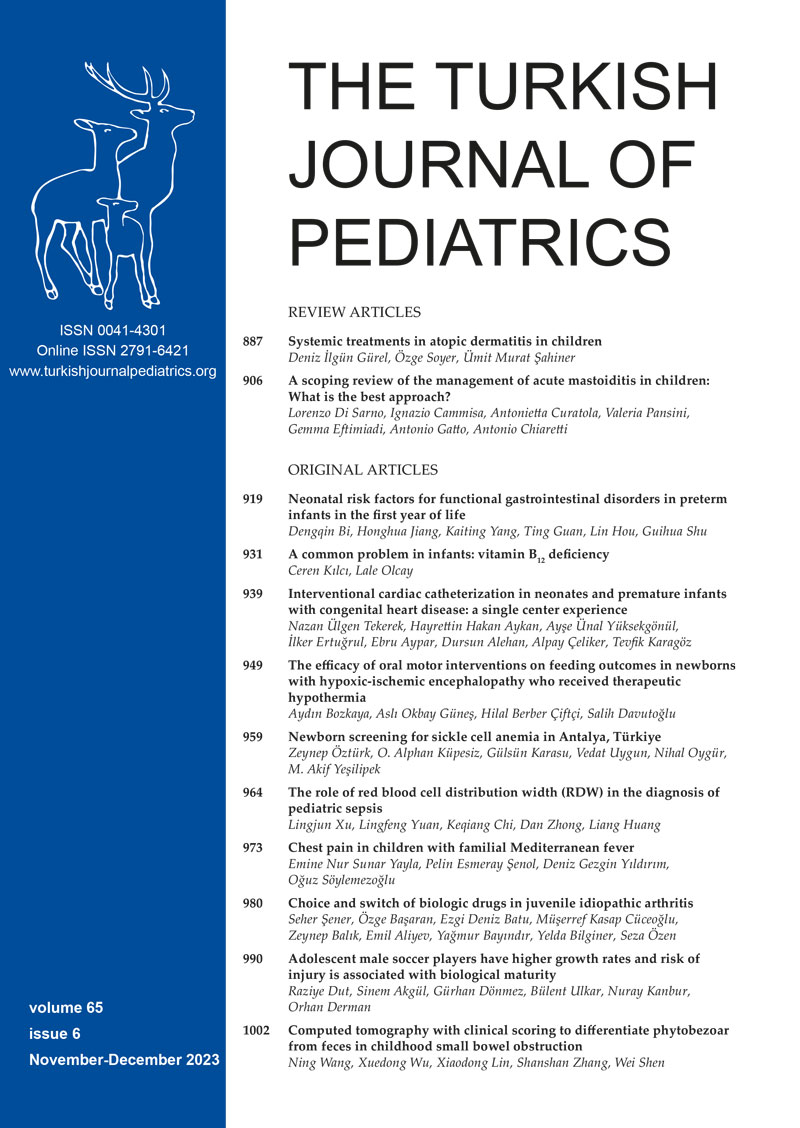Abstract
Background. Early diagnosis of pediatric sepsis is difficult, so it is necessary to find a reliable auxiliary diagnostic method. The purpose of the study was to assess the role of RDW in the diagnosis of pediatric sepsis.
Methods. We did a case control study reviewing pediatric inpatients (≥28 days, < 18 years old) who were diagnosed with sepsis between April 2020 and November 2022. According to the sepsis-3 and Pediatric Sequential Organ Failure Assessment (pSOFA) scoring standards, 66 septic inpatients of the pediatric intensive care unit (PICU) were included in the sepsis group and 66 non-septic inpatients of the PICU were included by using the random sampling method during the same period as the control group.
Results. RDW values in the sepsis group were higher than those in the control group (P < 0.001). The cut-off value, sensitivity, specificity and area under curve of RDW for sepsis were 39.15, 0.955, 0.758 and 0.943,respectively.
Conclusions. Our study confirms that RDW may have a good value on the early diagnosis of pediatric sepsis.
Keywords: diagnosis, pediatric, red blood cell distribution width (RDW), sepsis
Copyright and license
Copyright © 2023 The Author(s). This is an open access article distributed under the Creative Commons Attribution License (CC BY), which permits unrestricted use, distribution, and reproduction in any medium or format, provided the original work is properly cited.














